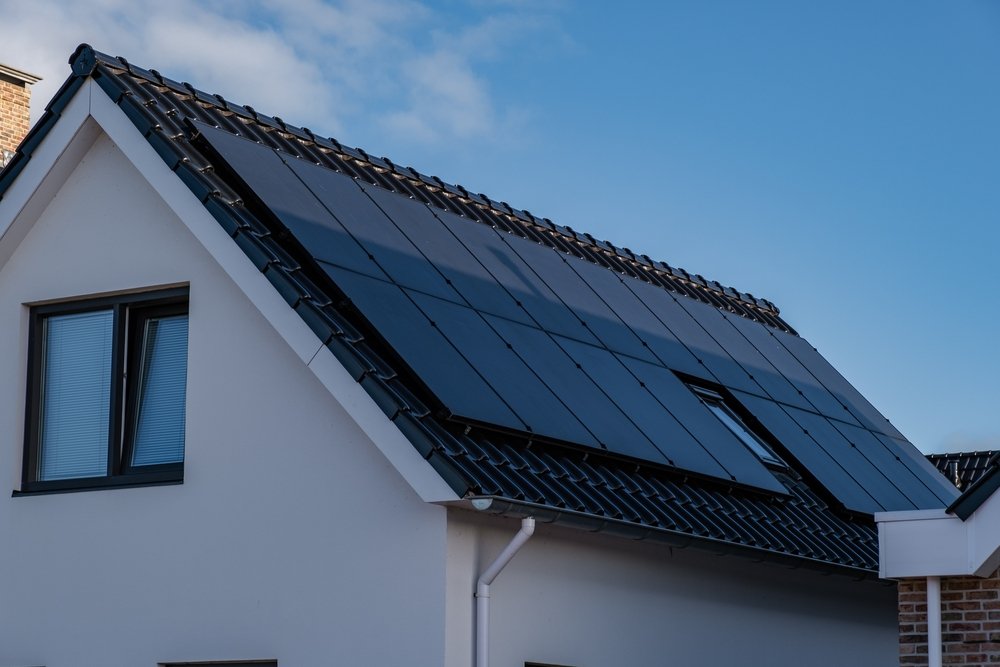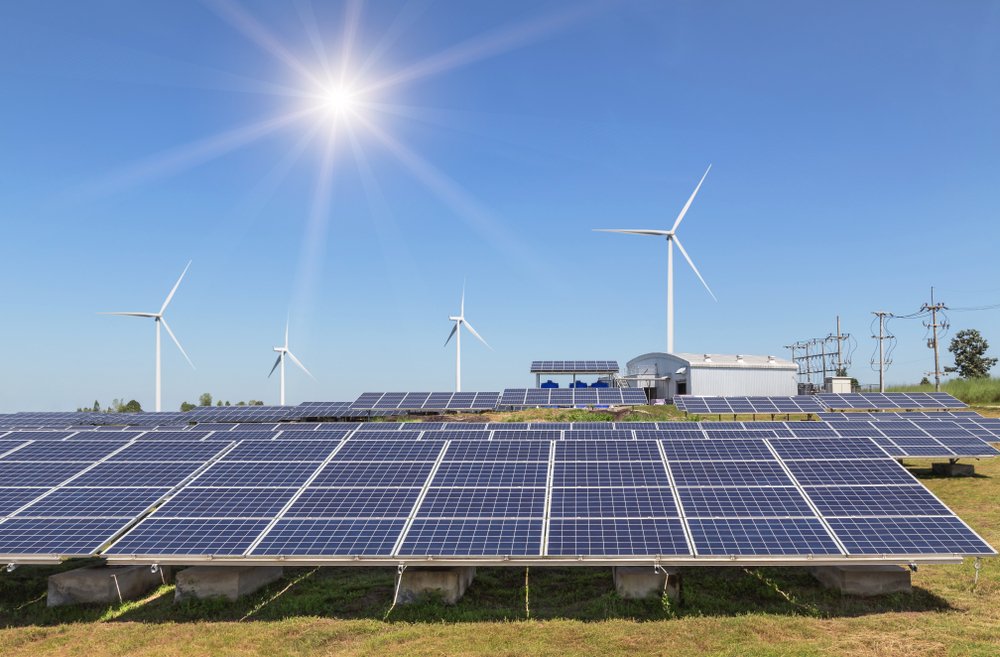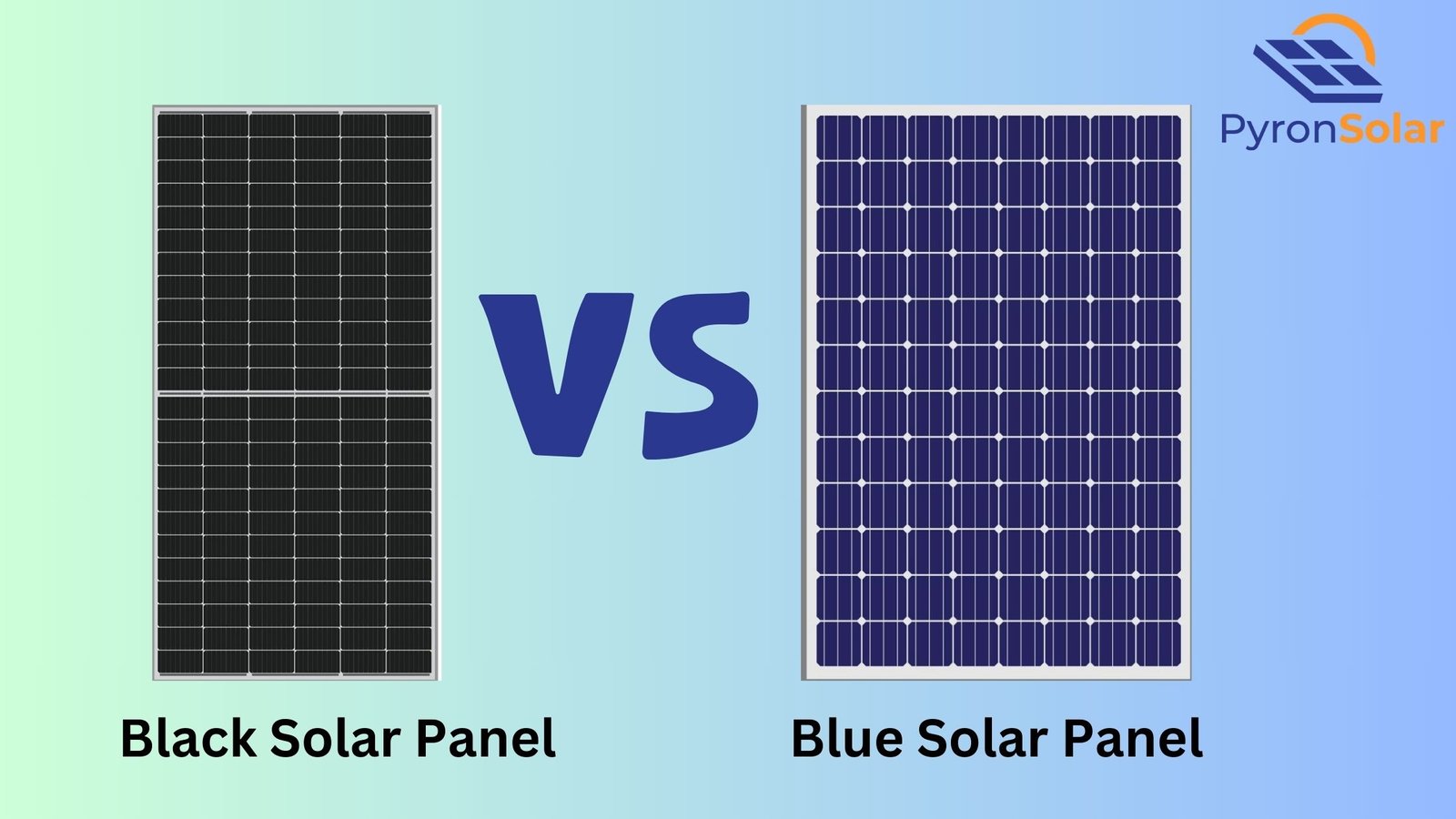Solar panels convert the sunlight’s energy to generate electricity through the photovoltaic effect that can be used to power residential and commercial appliances. Typically, silicon is the semiconductor material used to manufacture solar panels.
Mainly, the manufacturers prepare solar panels in different colours like black and blue to improve the light absorption capacity and efficiency, thereby reducing the reflective nature of the surface.
In the journey of gaining knowledge through the comparison of black and blue solar panels, you will know their advantages and disadvantages. Additionally, you will understand their energy-efficient abilities, space requirements, and performance in low-light conditions by producing more or less waste. Finally, you will be able to determine which is the better solar panel with the minimum expensive price range that meets your daily requirements.
What are Black Solar Panels?

Black solar panels are manufactured using nanotechnology and the “Czochralski process“. In this process, molten crystals are placed into pots under high temperatures and pressure to draw out their shapes, which are later cut into thin wafer solar cells for energy generation. Sunlight interacts with monocrystalline cells to give them a uniform black color. Additionally, the back sheets are made of materials like black EVA (ethylene vinyl acetate copolymer) to reduce visible reflections on solar panels.
Advantages of Black Solar Panels
Here are the main advantages of black solar panels you need to know:
- More Efficient
- Requires Less Space
- Performs better in low light
More Efficient
The black solar panels are made up of monocrystalline cells which are single-structured and have higher purity than the blue panels to increase efficiency and as well as efficient to capture diffused light.
Requires Less Space
Black solar panels have higher efficiency ( 18 to 23%) than blue solar panels which results in generating higher electricity per unit of surface area that requires less space for installation.
Performs better in low light
The IBC (Interdigitated Back Contact) technology eliminates electrodes in the front surface of solar panels by accurately positioning all electrical contacts at the back surface lowers light obstruction and performs better by expanding the area for higher absorption. Especially, the dual-layered glass modules capture and generate electricity from both directions even in low-light conditions.
Disadvantages of Black Solar Panels
These two main disadvantages of black solar panels might prompt individuals to change their preference towards other types:
- More Expensive
- Produces more waste
More Expensive
The black solar panels are more expensive due to the manufacturing costs including specialized materials and coatings. Despite the same manufacturing process of standard panels, it is a big challenge to obtain dark-coloured cells that are rarely available, which reduces the production of black solar panels. You can also learn the facts about
Produces more waste
A huge single crystal of silicon when cut into thin solar wafer cells requires more energy which results in generating more quantity of silicon wastes during the production process. It is because most of the solar panels are made up of polysilicon, which generates 3 to 4 tonnes of silicon tetrachloride.
What are Blue Solar Panels?

Many silicon layers within the mould are formed, which are cooled to form polycrystalline solar cells to create many crystals and produce a shining appearance.
Using the diamond-coated wire saws, the silicon ingots are sliced into thin wafers which are later processed into solar cells using several steps like doping (creates p-n junction for photovoltaic effect), anti-reflective coating ( gives blue colour) and applying metal contacts. Finally, the solar cells are wired together wrapped in glass and framed to create a complete solar panel.
The method of light reflection by the silicon crystals due to the anti-reflective coating contributes to the blue-coloured appearance that helps to improve light absorption and efficiency of solar panels.
Advantages of Blue Solar Panels
Here are the two most important advantages of blue solar panels you need to know:
- Less Expensive
- Produces lesser waste
Less Expensive
The purity of silicon in polycrystalline solar cells is less than monocrystalline which contributes to less expensive material costs for blue solar panels. Also, the increased scale of production reduces the cost per unit as more than 90% of solar panels in the market are polycrystalline.
Produces lesser waste
The manufacturing process of blue solar panels is simple and less energy-intensive as it doesn’t require any shaping in the production of polycrystalline solar cells, thereby producing less waste.
Disadvantages of Blue Solar Panels
Despite Blue Solar Panels has numerous benefits, certain disadvantages must be taken into consideration:
- Less Efficient
- Requires More Space
Less Efficient
Blue solar panels made from polycrystalline silicon contain several silicon crystals in a single cell which cannot perform efficiently in less sunlight or warm weather conditions, unlike the black panels.
Requires More Space
Blue solar panels have lower efficiency (13 to 16%) than their black counterpart which results in the requirement of more space to generate the same amount of electricity as the higher-efficiency solar panels.
Black vs Blue Solar Panels: Which Panel Type is better for you?
While choosing the better solar panels, you need to consider these factors such as:
- Efficiency: To generate more electricity per unit surface area.
- Cost: Affordable price by melting multiple silicon together which results in cheaper manufacturing materials.
- Environmental Impact: Should produce less silicon waste and consume less energy.
- Appearance: Uniform structure or textured appearance.
If you’re looking for a cheaper solar panel that requires a large space then Blue Solar Panels is the best choice It costs $0.90 to $1.50 per watt. Also, you cannot expect higher efficiency from such panels.
On the other side, if you prefer higher efficiency, then Black solar panels are the ideal option despite their expensive price range between $1 and $1.50 per watt. You can also learn “How to choose the best solar panel?“. It will help you choose the right solar panel.
Do Solar Panels Come in Different Colours?
Yes, You can observe residential solar panels that come in different colors apart from black and blue, which include shades of grey, brown, green, red, and transparent panels. The reason behind this is that there are so many different types of solar panels, and they are not commonly available since their colors are changed through dyes and coatings that reduce efficiency.
The coloured variants can be developed by combining the silicon solar cells with dielectric nano scatterers that are made up of nano cylinders (100 to 120 nm wide and 240 nm high) of crystalline silicon printed onto the solar cell surface. Various colours can be obtained when the printed silicon nanotubes on solar panels surface can be adjusted to an angle of 8° to 75° and results in only 10 to 11% efficiency loss. As a result, primary colours like red, green, and blue as well as other colours can be created on the panels.
The main drawback of coloured solar panels is it is less efficient compared to conventional black and blue panels. It is because the dyes and coatings diminish the panels’ ability to absorb sunlight. Also, these panels are more expensive. Still, few people prefer it to match along with their building colours. Typically, coloured solar panels are 45% less efficient than standard black or blue panels.
The latest technological developments in the field include researchers creating solar panels with a special material called photonic glass that allows light to pass through them. Consequently, different colours are created by controlling the tiny particles in the glass known as “spheres”. Depending upon the sphere’s size, the selective colours get reflected. This approach helped researchers create solar panels that appeared purple, blue, or green and the efficiency decreased from 22.6% to 21.5%. In other words, there will be just a 1% reduction in efficiency.
Ray is an avid reader and writer with over 25 years of experience serving various domestic and multinational private and public energy companies in the USA.

